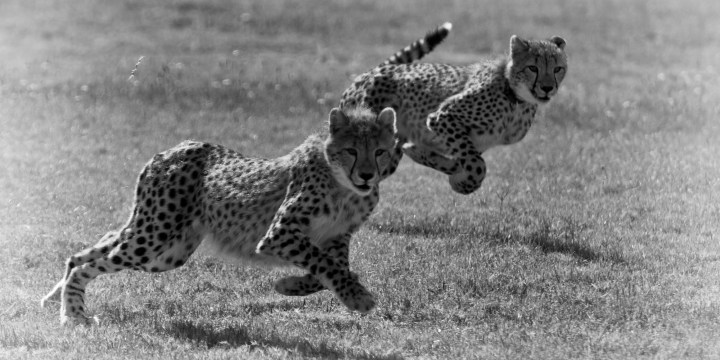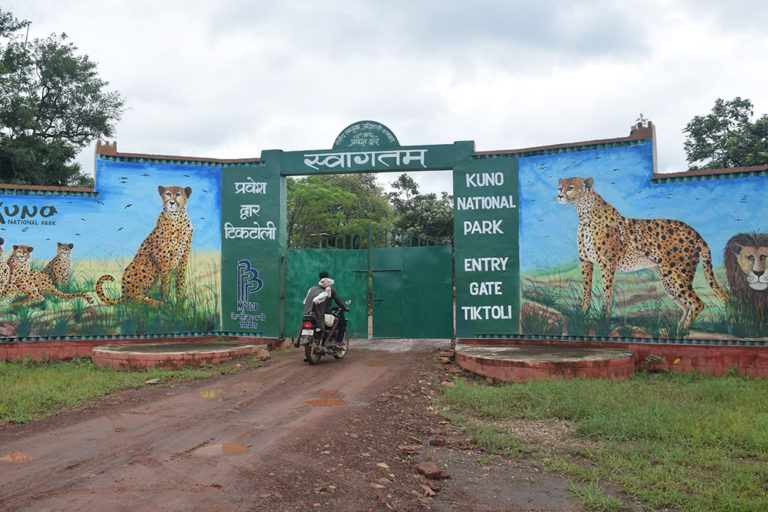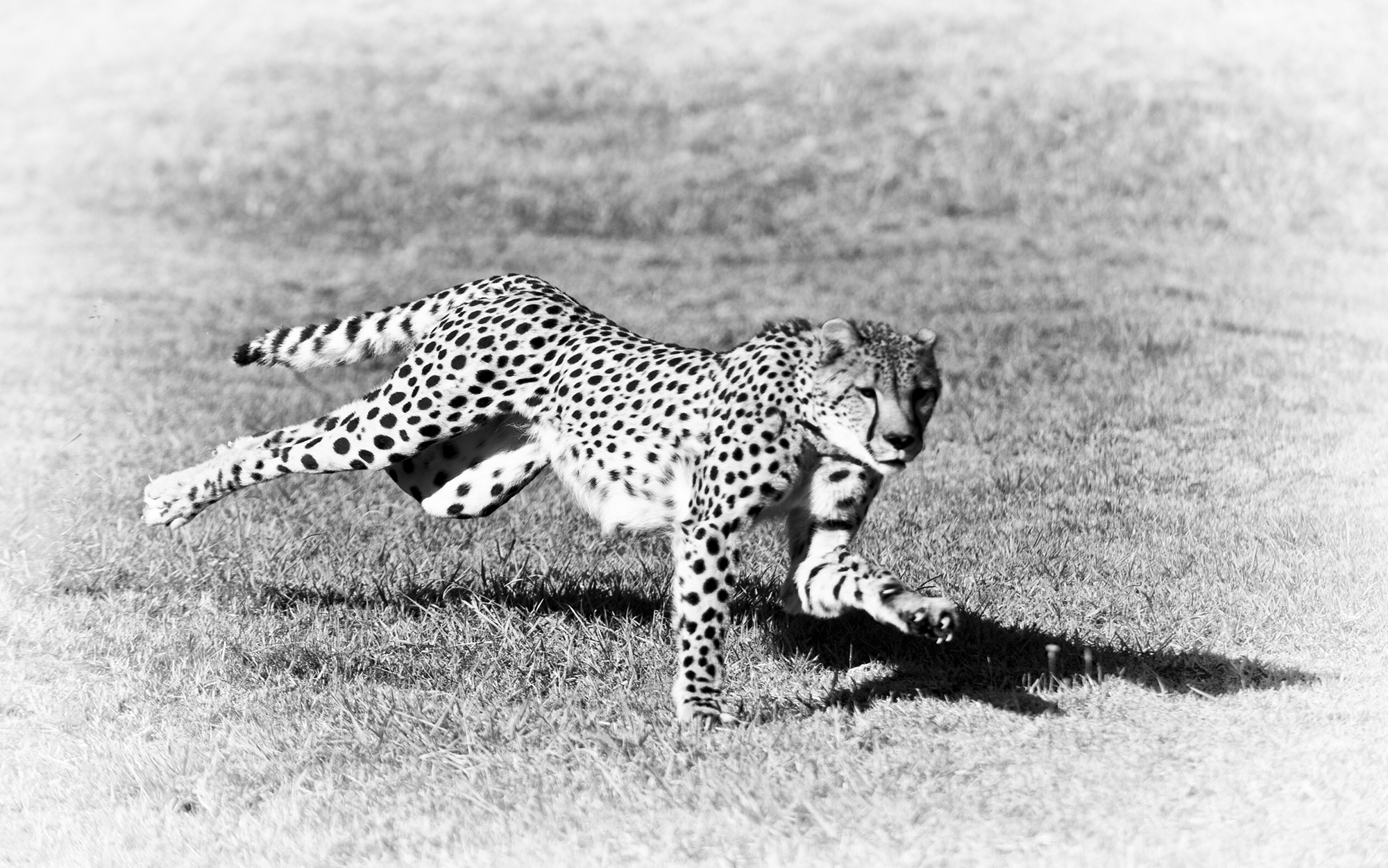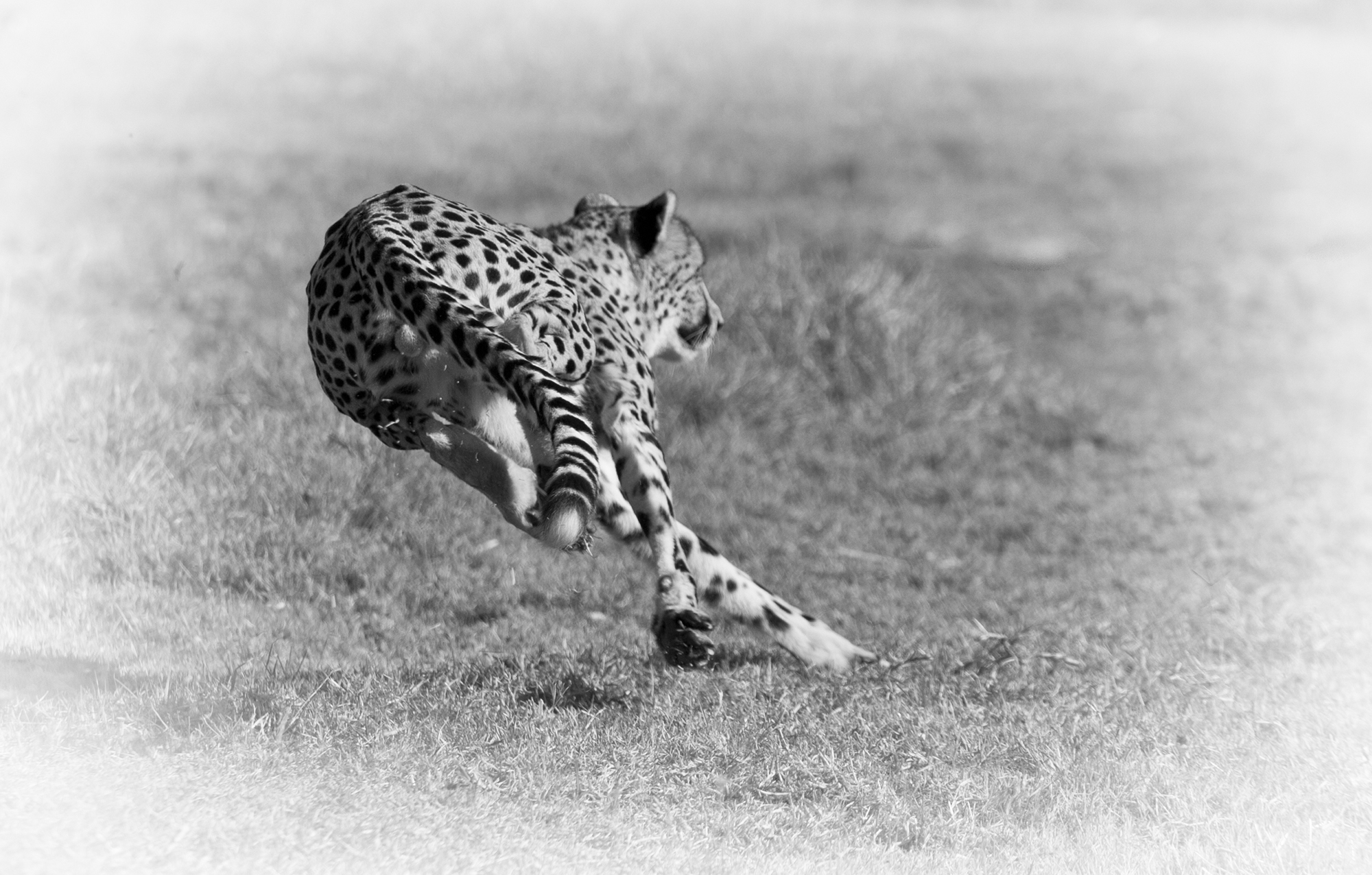A SPOTTING CHANCE
Running for their lives – last-minute bid to stop cheetah export to India

Twelve formerly wild cheetahs, which have been in holding pens for over seven months, are scheduled to be crated and flown to India on Friday, 17 February. But a conservation group is trying to stop this from happening, declaring it a violation of regulations.
The cheetahs are destined for Kuno National Park in Madhya Pradesh, central India, to join eight others imported from Namibia in September 2022. The cats have been penned since July last year, awaiting the go-ahead. The deal has now been signed off by the South African Department of Environmental Affairs.

The entrance gate of Kuno National Parkin Madhya Pradesh, central India. (Photo: Supplied)
From the beginning, there has been controversy about the project. Kuno National Park is unfenced and surrounded by farmers with cattle, sheep, goats, chickens and dogs. The young of the first three could prove tasty, the last may be a vector for distemper and rabies. The park also contains leopards, wolves and striped hyenas.
Lawyers acting for the EMS Foundation have petitioned Environment Minister Barbara Creecy to stop the export until the risks to the animals’ survival are properly established and public comment has been obtained. They have deemed the export effectively illegal.
The export is said to be the first of a relocation of 120 wild cheetahs to India over a period of 10 years.
EMS Foundation lawyers say the export is based on an outdated non-detriment finding (NDF) – such findings by the Scientific Authority are required to ensure export is not detrimental to the wild population.
They say the finding permitting the cheetah export was based on a 2020 NDF that is out of date, was not ratified and was only issued for public comment.
So the export is effectively based on a 2015 NDF “and does not appear to be robust” because that NDF recommended a zero export quota.
Read on Daily Maverick: Twelve Southern African speed cats travel 9,000km to bring extinct cheetahs back to life in India
Vulnerable
Cheetahs are vulnerable and decreasing in number, with an estimated 6,517 alive globally. Their populations are extremely fragmented and confined to around 9% of their historical range. Most are on unprotected lands and face multiple threats.
According to the letter to Creecy, an unacceptable number of cheetahs are likely to be lost through the stress of translocation, having to undergo a long quarantine, having to deal with unfamiliar predators and the fact that the reserves in India are unfenced, which will bring them into conflict with humans. There is also a disease risk.
“There appears to be little knowledge about feline viruses in India, or any information about the diseases which the cheetah may in turn introduce to India… cheetah are highly susceptible to feline infectious peritonitis virus and India has no baseline information regarding this virus.”

Lawyers are petitioning for Environment Minister Barbara Creecy to stop the export. (Photo: Don Pinnock)
When the first eight cheetahs were relocated from Namibia, wildlife biologist and conservation scientist Dr Ravi Chellam of the Metastring Foundation called the project poorly conceived and grossly expensive.
“The cheetahs will require intensive hands-on management over decades,” he said.
“The government has still not implemented the 2013 court order to translocate Asiatic lions, of which there are only around 700 in the world, from Gir, Gujarat, to Kuno, but they’re quick to implement a 2020 order to bring in cheetahs from Africa, which number less than 7,000 in the world. Which is more endangered?
Such projects, though sexy, are a distraction to our core objective of conserving wildlife and ecosystems
“This project is being rushed through to meet some goals other than conservation. The conservation goals are unrealistic and even unfeasible. Unfortunately, this will be a very costly mistake. It will be one of the most expensive conservation projects India has undertaken.
“We do not have habitats of the size cheetahs require. Without suitable high-quality habitats, this project is unlikely to succeed,” said Chellam.
‘Massive losses’
Vincent van der Merwe, who runs the Cheetah Metapopulation Project and worked with the relocation of the cats, said, “It’s gonna be one hell of an uphill battle… there are going to be massive losses initially.”
He admitted that the successful establishment of cheetahs into the proposed introduction sites would need to be managed until at least 1,000 cheetahs are in place.
Read more on Daily Maverick: Translocation of SA cheetahs to India — ‘there is going to be a lot of heartache and pain’
“This will require long-term commitment by South African and Namibian authorities to provide unrelated cheetahs for relocation to India. Certainly, within the first 10 years of this project, there’s going to be a lot of heartache and pain.”
But he said South Africa has a surplus of cheetahs that would have to be euthanised or stopped from breeding, neither of which was optimal. So relocation was a good idea.

Cheetah numbers are decreasing, with an estimate of just over 6,500 alive globally. (Photo: Don Pinnock)
Prerna Singh Bindra, wildlife conservationist and former member of the Indian National Wildlife Board, was sceptical, saying she wouldn’t classify the project as conservation.
“Such projects, though sexy, are a distraction to our core objective of conserving wildlife and ecosystems. The cheetah is one of the widest-ranging of big cats and known to travel across areas in excess of 1,000km2 in a year.
“Historically, India has lost about 90% to 95% of its grasslands; 31% in a decade between 2005 and 2015. So where will the cheetah roam if it were ever returned to the wild?”
Visit Daily Maverick’s home page for more news, analysis and investigations
Three of the 12 cheetahs due to be sent to India have been kept in quarantine in Phinda, KwaZulu-Natal, since 15 July 2022, while nine have been quarantined in Rooiberg, Limpopo.
Ten quarantine enclosures have been created for the South African cheetahs at Kuno, where the eight Namibian felines were placed last year.
If the relocation goes ahead – and it probably will – a military C17 aircraft from the Hindon air base in Uttar Pradesh fetch the cheetahs from South Africa. A team of South African and Indian veterinarians and wildlife experts will accompany them.
The five female and seven male cheetahs will then be transferred from the Gwalior air base where they’ll land on Saturday morning before being transported to Kuno in an Mi-17 helicopter.
Read on Daily Maverick: Cheetahs cleared for take-off after South Africa-India ‘extinction reversal’ agreement
The Memorandum of Understanding signed between India and South Africa in January this year approves translocations of 10 to 12 cheetahs annually “until a sustainable cheetah population is established in India”.
In addition, four to eight cheetahs will be imported from Namibia each year for the next five years.
If all goes according to plan, the 20 cheetahs will stay in a fenced area at Kuno before being released into the park.
After that, every cheetah will have to figure out how to survive in unknown, untested territory. DM/OBP





















Well – i get that this is might be a bit of a stunt, but the reality is that no one wants cheetahs in SA. we have too many, and they eat a lot, and are very hard to contain (like wild dogs). So – which is better, let the cheetahs die here, try to create more space for them in SADC or other African countries, or start another sanctuary population in India? I dont know if the right park/release site has been chosen, what the other politics are behind this, whether the costs are justified set against the shrinking budgets for conservation in both countries. etc etc, but the assumption that creating sanctuary populations with the right, surplus, wild, suitable individuals of a threatened species is worth supporting.
” South Africa has a surplus of cheetahs that would have to be euthanised or stopped from breeding,” that is a bummer for Cheetah .
Succeed in the wild , then have a miserable life , if they are ‘lucky’ 🙁 .